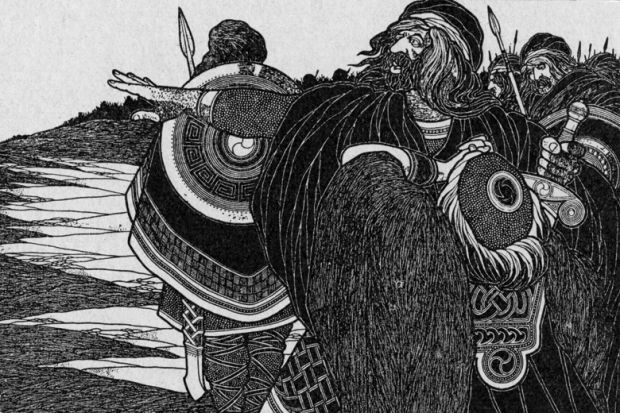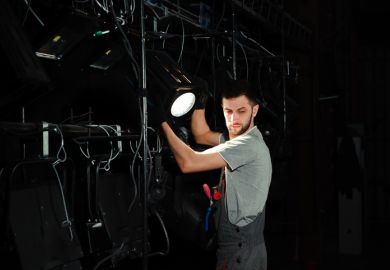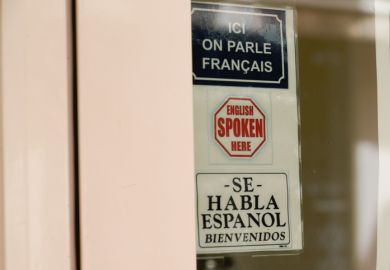The medieval Irish were a culturally confident lot. They developed a script, ogham, for the writing of monumental inscriptions in their own language by the 4th century AD. By the 7th century, Irish monks were copying and composing texts not only in Latin but in Irish as well, and committing these vernacular texts to vellum. Starting around the beginning of the 12th century, great compilatory manuscripts were produced that act as our earliest witnesses to many important texts, among them the prose epic Táin Bó Cúailnge, or The Cattle-Raid of Cooley.
Táin Bó Cúailnge is the centrepiece of a constellation of tales known collectively as the Ulster Cycle. These tales revolve around the court of the King of Ulster, Conchobhar, at Emain Macha (Navan Fort, near Armagh), and they are placed in a chronology of world history that gives Conchobhar the same birthday as Christ. Cú Chulainn is the hero who defends the province against Queen Medb of Connacht, who is in search of a prize bull to secure her claim to be the equal of her husband in wealth.
Starting in the 19th century, scholars began to correlate the literary universe of the Ulster Cycle tales with material cultural artefacts, landscape features and accounts of the Celts by classical authors. Kenneth Jackson’s 1964 lecture “The Oldest Irish Tradition: a Window on the Iron Age” is a locus classicus of this approach, in which the tales are seen as preserving an authentic reflection of pre-Christian Iron Age culture, both material and social.
A well-respected archaeologist venturing into the minefield of medieval Irish literary studies, J. P. Mallory does so with good humour and with an eye to engaging specialists and non-specialists, literary scholars and archaeologists. The “Dreamtime” in the title of the book is a reference to the Aboriginal Australian mythological imagining of their world, and here is used to describe the past as seen and created by the medieval Irish monastic literati responsible for the tales under consideration here.
Mallory looks at the world represented in the Ulster Cycle, including the natural and built environments, accounts of warfare and weapons, transport, burial, clothing and ornament, and asks “can we identify…at least elements of the [Irish] Dreamtime with a real world of archaeology or is it purely an imagined world concocted in the mind of a medieval monk from a variety of sources…?” The answer to his question is “the latter”, and his book should put to bed the notion of the Ulster Cycle as providing “a window on the Iron Age”. The archaeological horizon of the tales is that of medieval Ireland, and the past represented in them is one richly imagined by their medieval creators. This conclusion is consistent with the view of most contemporary literary scholars. This is not to say that the tales do not contain a vast amount of native narrative tradition; they do, but they cannot be said to afford us insight into Ireland around the time of Christ. Mallory’s book will be of interest to those already immersed in the study of medieval Ireland, but hopefully will also prove a way into this fascinating subject for those new to the field.
Kaarina Hollo is lecturer in Irish in the School of English, University of Sheffield.
In Search of the Irish Dreamtime: Archaeology and Early Irish Literature
By J. P. Mallory
Thames & Hudson, 320pp, £18.95
ISBN 9780500051849
Published 9 May 2016
Register to continue
Why register?
- Registration is free and only takes a moment
- Once registered, you can read 3 articles a month
- Sign up for our newsletter
Subscribe
Or subscribe for unlimited access to:
- Unlimited access to news, views, insights & reviews
- Digital editions
- Digital access to THE’s university and college rankings analysis
Already registered or a current subscriber?






